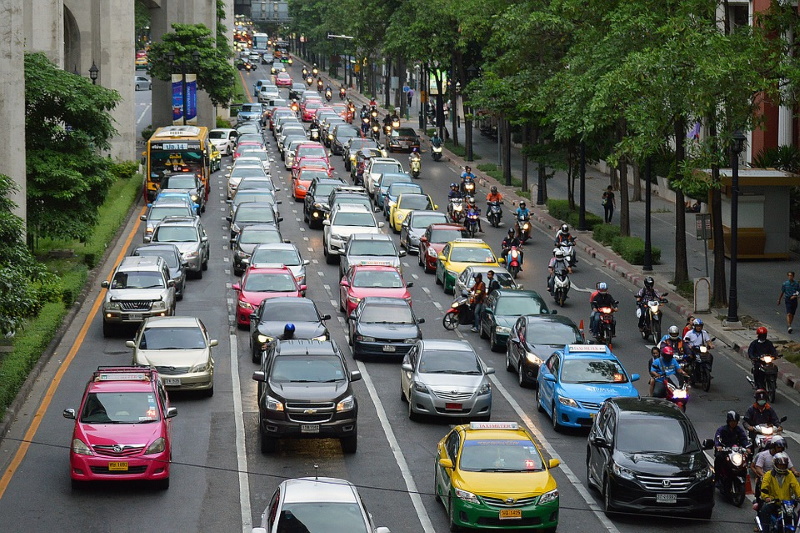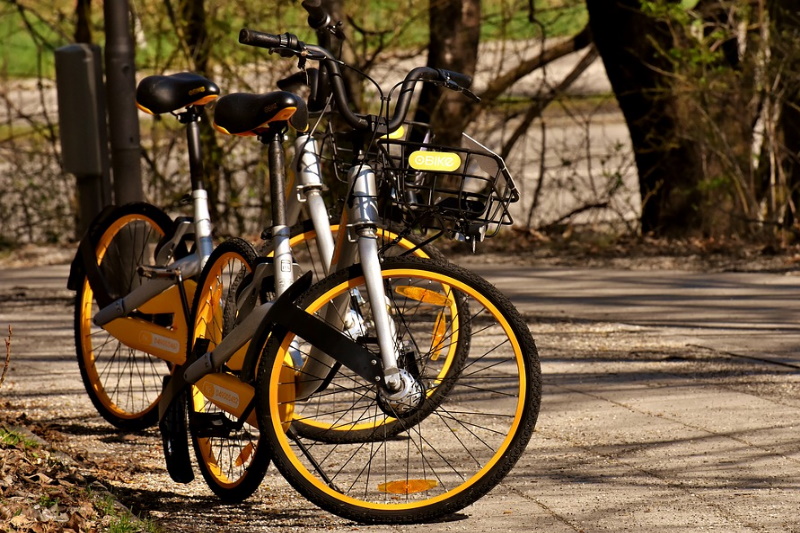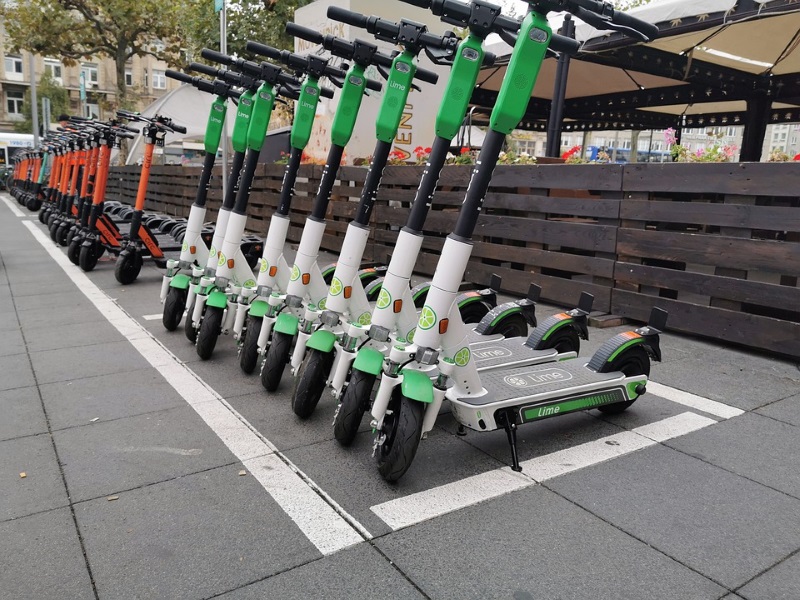I just returned from AutoMobility LA (the Los Angeles Auto Show), one of the most important shows on the calendar for automakers, and quickly became one of the largest shows dedicated to automotive alternatives. While the bulk of the show was about the latest and greatest of the automotive world, from the Ford Mustang Mach-E to the Audi RS6, a large chunk of the conferences and displays were dedicated to emerging technologies under the broad definition of “mobility solutions.” The term seems to mean anything from a $3,500 electric scooter that can go “up to 12 miles” to a fully autonomous bus that is designed to service urban city centers.
With mobility-focused Tech-Startups popping up every day and major car manufacturers like Ford launching the City: One initiative to explore and develop technology for the transportation needs of the future, “mobility solutions” was a hot topic at the show. Ford’s City: One “addresses city needs through two key perspectives: innovating mobility services and reimagining public spaces. Combining solutions from both areas can help the world move better, one person at a time.” At least that is what the website says and Ford has been putting hundreds of millions of dollars behind the concept, acquiring electric scooter company Spin for $100 million, investing $1 billion in Argo AI, and over $500 million in electric truck maker Rivan, just to name a few of the investments made by the Blue Oval. The City of Los Angeles also recently announced the launch of Urban Movement Labs, a public-private partnership to promote innovation in mobility and perhaps come up with a plan to ease the city’s transportation problems. One thing was evident: Silicon Valley’s venture capital start-up model has attached itself deeply into the automotive industry.

The atmosphere felt more like a church revival, and I didn’t have a copy of the hymnal! The event was even held in a big tent, and the on-stage Evangelist-like presenters extolled the virtues of electric scooters and declared we were on the verge of a new horizon of personal mobility freedom. It’s a concept I found odd since, to me, real personal mobility has always meant ownership, be it a bicycle, motorcycle, or car. The ability to get on my bike or in my car and just go wherever I wanted, when I wanted, without having to ask permission or search for a scooter with enough charge, seemed far more freeing than the minor inconvenience of ownership. Sure, owning a Fiat X-1/9 as my only vehicle was more inconvenient and expensive than Uber, but personal style choices aside, and despite Evangelistic appeals, I still wasn’t buying the case for “mobility” as the brave new world.
Each presentation had more buzzwords than the last: sustainability, micro-mobility, multimodal integration, mobility-access, and A.C.E.S. (which stands for autonomous, connected, electric, and shared). Each painted a vision of a noble future that was better, brighter, and cleaner. However, there was no talk about the environmental impact and human toll on countries like Indonesia and Congo or the coming e-waste crisis that is the result of their revolutionary mobility doctrine. Just like at the faith healer’s revival, money is the end game and certainly, there are billions up for grabs.
Nearly everything being preached on stage could have been ripped right out of a newsreel from the 1930s about “The City of Tomorrow.” Many of the journalists in attendance were true believers, excited about the opportunity to be driven to work in an autonomous bus, for the gamification of connected mobility, or to have access to the many electric scooters littering the city streets. The visionary CEO’s from Silicon Valley and their marketing gurus are preaching that within just a few years, we will summon a car to our home, it will take us wherever we want to go with less traffic, cost, and emissions. If we are to believe the evangelists from Uber and Waymo, we are just around the corner from a driverless utopia at scale, but the widespread adoption doesn’t seem to be gaining traction in the real world. From regulatory hurdles to limitations of technology, Dr. Bryan Reimer of MIT says we are decades away from level 4-5 autonomy being adopted at any scale.
After attending panels and press conferences on everything from autonomous vehicles to car-sharing platforms, one thing was clear: governments and businesses want more control over where and how you travel. From suggestions that ranged from outlawing private vehicles to the concept of connecting all forms of transportation via a massive AI network that would control all aspects of travel, eliminating choice seems to be the end game. It wouldn’t be a stretch of the imagination that these systems could be integrated with dystopic social credit systems that would prevent or limit travel like what is currently being implemented in China.
I am not a Luddite, and many of these mobility solutions are excellent ways to expand the independence of people who cannot drive or make temporary use of vehicles or platforms more accessible. I can see the value of Bird Scooters in tourist destinations, but as a means of daily commuting, it has many limitations. I enjoy the freedom my robotic lawnmower provides and the convenience of taking an Uber to events where parking might be an issue. Giving consumers choices is always a good thing, but the concept of eliminating private vehicle ownership in exchange for renting access from a handful of companies is a step too far for me and could have many unforeseen impacts. With companies like Uber and Lyft losing money in the billions and scooter rental company Bird burning through hundreds of millions of dollars in an attempt to corner the electric scooter market, hinging our transportation futures on these concepts is risky as governments shape policy

Look at the recent scandals with Facebook, Google, Twitter, and other technology companies. From Cambridge Analytica to data breaches to the actions taken by a rogue employee, the concept of handing over access to much of our physical travel to a small group of Silicon Valley companies could come with ramifications that range from voter suppression to acts of cyber-terrorism. Accusations that Google suppressed Democratic Presidental candidate Tulsi Gabbard’s ability to run ads have resulted in a $50 million dollar lawsuit, Facebook was fined $5 billion by the FTC for privacy violations, and two former Twitter employees were just charged with spying for Saudi Arabia. In the automotive space, we have already seen Tesla remotely shut down features on cars they deem as “unsupported.” It is not much of a stretch of the imagination to see how a connected and centrally controlled transportation network could be manipulated, monetized and weaponized.
Since I was in town for Automobility LA I decided to test a real-world example of the state of the “mobility” concept by using Uber, Bird Scooters, and the Metrolink train. The purpose was to avoid spending $38 daily on a rental car. However, these mobility solutions ended up costing me much more. The 12-mile trip from LAX to my hotel cost $27.50; that’s before tipping. The average cost of a ride to and from the convention center and other venues, all less than three miles from my hotel, was $11.00 per trip. Overall, for two days in Los Angeles using Uber, I spent $99.77. When you add in the $11.50 for the train ticket, my total using Mobility Solutions was $111.27. An economy rental car for the same period would have cost $114 plus gas. Factoring in the waiting time, the time lost in the car accident one of my Uber drivers had while taking me to the convention center, I would say that the cost of Uber/Public Transportation vs. a Rental Car was about a wash, but with a LOT more hassle, wasted time, and exposure to far more interesting smells in a two-day trip than I am accustomed to.
My experience with Bird scooters wasn’t much better, after leaving a late event at the convention center I decided to try one of the electric scooters littering the sidewalks. I opened my app and found that there was a scooter just half a block away; the 15 or so other scooters scattered about were from different companies. After walking to where the scooter was, I scanned it, showing it was out of power. The next scooter in the direction I was headed was a block away, so I continued down the street until I came to a homeless encampment, I didn’t see the scooter, so I can only assume it was in one of the tents or shanties. On my app, a third scooter showed up across the street and down about another half a block. This scooter was charged, but the throttle button was broken clean off. At this point, I searched for an Uber and had to wait for nearly 10 minutes. Had I left the convention center and just gotten into a rental car, I would have returned to my hotel in less than 5 minutes without risking wandering the streets of LA looking for a “mobility solution.”
I still believe that absolute mobility freedom comes with independent ownership because with ownership, comes responsibility, with responsibility, comes accountability and pride. No one cares if they destroy a Bird Scooter because they can’t be held responsible for the damage. Just take a whiff of your next rental car and ask if you think shared vehicle fleets would fare any better in a major city like LA. So, while I might take an Uber home from a holiday party or ride a Bird Scooter for fun along the Beach, the myth of life-changing mobility solutions being just on the horizon seems to be more about venture capital than about helping people venture.





















I had the same experience when visiting Los Angeles.